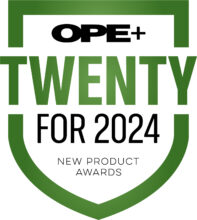Postseason analysis key to preseason planning and prosperity
By Bob Clements
Now is the time of year that every dealer should invest a few hours evaluating their numbers for the 2008 season. By starting now, this will give your accountant time to estimate what your tax liability might be for the year and allow you to make good year-end financial decisions. For other dealers, you may have the need to evaluate your dealership from top to bottom in order to determine your optimal inventory levels for wholegoods and parts, as well as labor levels for your service department. It is time to focus attention on your three key profit centers: wholegoods, parts and service. I challenge you to evaluate each department so that you can make decisions that will give you a strong start in 2009.
Wholegoods
Before you make the decision on how much equipment to order for next year, you should first look at your wholegoods and decide which lines you are going to carry and support for 2009.
Working with dealers throughout North America, my team of dealer advisors and I have found that this area — more than any part of the dealership — is the one that is the most emotionally charged. Most dealers have become addicted to their wholegoods. They feel that carrying more lines brings more security to their business.
I recently discussed with a dealer the possibility of reducing his wholegood lines from six to three. His thought process: “The more lines I carry, the more leverage I have, and the better I can play one manufacturer off of another.” While he thought his reasoning (let’s get every manufacturer competing for my business) was sound, the opposite is actually true. The more lines you handle, the less attractive you are to most manufacturers.
In today’s marketplace, every manufacturer I know is looking for dealers who are willing to become exclusive. I don’t necessarily recommend having just a single line because it eliminates one thing that customers like today, which is choice. However, I do believe that most of you will find that if you carry two lines, each manufacturer will do more to help you than if you were to divide your wholegoods sales between five manufacturers. So before you start getting bombarded by manufacturers to get those orders in for 2009, take the time to evaluate your sales by line and give serious thought to reducing rather than expanding your offering.
The first thing you need to do is get serious about what your true gross profit margin (GPM) is on the equipment you sell. In the simplest of terms, GPM is the percent of your money that remains from sales after you pay off the equipment.
To calculate your GPM, divide gross profit by sales. For example, if a dealer sells a mower for $8,000 and it cost $6,500, the GPM would be equal to $8,000 minus $6,500, divided by $8,000, or 18.75 percent.
Basically, an 18.75-percent GPM means that for every dollar generated in wholegood sales, the dealer has 18.75 cents left over to cover basic operating costs and profit. While this number gives you some base information, what you really want to do is calculate your true GPM. To do that, you have to include three factors: 1) Setup costs; 2) Interest expense; and 3) Bonuses and spiffs.
1) Setup costs (add to cost): What most dealers don’t figure into the cost of equipment is the setup expense associated with that particular piece of equipment. If you have one manufacturer that has equipment you can set up in an hour and another manufacturer with similar equipment that takes two hours to set up, that has to be figured into the cost of the equipment. If your posted shop labor rate is $75 per hour, you would need to add that setup cost to the equipment costs. In other words, you would need to add $75 to the cost of one machine and $150 to the cost of the other. You should also add into the setup cost any money or time you spend on disposing of the crating. Those are real dollars that your dealership spent to make the equipment ready to sell, and they have to be accounted for and added into the cost.
2) Interest expense (add to cost): There are times that you have carried equipment past the floor plan due date and have incurred interest expense on your equipment. That money has to be to be added to the cost of the equipment. (As a quick note, one of the benefits of working with fewer manufacturers is that they will often work with you to move equipment you are not selling or help you reduce your cost to offset your interest expense.)
3) Bonuses and spiffs (subtract from cost): If a manufacturer has a volume bonus you get at the end of the year or spiffs they give you during the year for selling a specific model, those dollars have to be subtracted from your cost of goods for that particular manufacturer. Most first-line manufacturers have bonuses they give dealers based upon their sales volume for the year. One in particular that I am aware of gives its dealers anywhere from 1 to 5 percent based upon their sales.
Just for fun, let’s say you sell $250,000 in equipment, and you receive a check or credit for $7,500 in December. Most dealers just show that $7,500 as additional income, but it really needs to be subtracted from the cost of goods sold for that manufacturer. In this case, your cost would be reduced by 3 percent, so your true GPM would have increased by 3 percent.
As a dealer, it’s important to keep your eye on your true GPM; once you know the real number, it becomes easier to determine what you want to do with your wholegoods.
Parts
After you evaluate your wholegood lines, your next focus should be on reducing your parts inventory.
At this time of year, we would expect the parts manager to have reduced the parts inventory to its minimum levels. We tell our dealers that they shouldn’t be carrying any more than 15 percent of their peak season inventory. So, if at your peak, you had $300,000 in parts inventory, your parts department should be nearing the $45,000 level for several reasons. First and foremost, every part you have on a shelf that you are not going to sell within the next month is dollars that are inaccessible to you.
During slow season, cash flow and cash reserves are critical to maintaining your sanity until the next season starts. When it comes to payday, few, if any, of your employees will take a carburetor and a spindle in place of their paycheck for the week. You need cash available to you over the next few months. While parts are an asset according to your accountant, they are not cash and cannot easily be converted to cash during the slow time of year.
The exception to this, of course, is if you are a dealer that has a snow season. If that’s the case, I would still expect the spring season inventory levels to be reduced to 15 percent, but the snow season inventory to be moving toward its peak.
If your parts manager hasn’t started the process, get moving on it as soon as possible in the next 30 to 45 days. Most manufacturers allow dealers to return parts that they have ordered but do not need. Every manufacturer has a different program, but they all have a program. Some manufacturers allow you to return parts for a credit, a few for cash, and a couple require you to order other parts to replace the ones that you are returning. It doesn’t matter what the program is — make this the year you reduce that parts inventory down to a level that is manageable. It may not have a huge impact during this slow season, but it will be huge as you move toward the end of 2009.
Just as it is important to reduce the lines you carry in your wholegoods, it is equally important to reduce the number of vendors you have for your parts. With most manufacturers, your parts sales will be combined with your wholegoods sales to determine your volume discounts or bonuses. We strongly urge parts managers to purchase as much of their parts from their main suppliers. The more you spread out your purchases, the less leverage you have and the less profit you tend to make. Also, keep in mind that most manufacturers will have a fall or winter parts special that let you get special pricing, free shipping and great terms on their parts. If your parts inventory is at the level we recommend, you will be in a great position to take advantage of that special pricing and improve your overall efficiencies and profitability.
Service
As you look at your service department, the most important question to ask yourself has to do with your staffing. If you were not happy with the quality or volume of service work that came out of your shop this year, then you need to step back, get away from your emotions, and take a hard look at the reason why. If you have read my previous articles in OPE or heard me speak to dealers about service department issues, you know that I preach the following: Anything less than 75-percent efficiency for your tech is unacceptable. That would be six billable hours in an eight-hour day. If you are not at 75-percent efficiency, then you have to evaluate your staff and whether you have the team to take you to where you want to go in the coming year.
Of all the decisions you will make in your dealership, this will, in most cases, be the toughest. I strongly encourage all of my dealers to rate each tech based on the ability to produce good work, volume and attitude. If you have any question about any one of them, then ask yourself a simple question, “Is this the best tech that’s out there, or, over the next four months, with some effort, can I find someone better?”
Your goal for your service department is to continue to look for the best of the best when it comes to techs. Your shop, run properly, is a cash machine. If it wasn’t a big profit producer in 2008, don’t let it slide for another year. Make the tough call with your techs, and start building a service department that produces the profits you have the right to expect.
As we all know, even in the best of times, running a dealership is a difficult proposition. Therefore, it’s critical to make sure that you do everything possible to learn from the past season and make the necessary adjustments to improve your position for the upcoming one. At this point, we don’t know where the economy is going to be, what the weather is going to be, or how customers will feel about buying. But, we all know that regardless of all the factors that come into play, the 2009 season will start and everything you do or choose not to do over the next few months will have a great impact on the profits you take home at this time next year. If you are willing to make some tough decisions right now, 2009 can be one of your most profitable seasons.
Bob Clements is the president of Bob Clements International, Inc., a consulting firm that specializes in the development of high-performance dealerships. His organization works hands on with dealerships throughout North America, helping them attain the personal freedom and financial wealth all entrepreneurs strive to achieve. For more information, contact Bob Clements at (800) 480-0737 or bob@bobclements.com or visit his Web site at www.bobclements.com.


